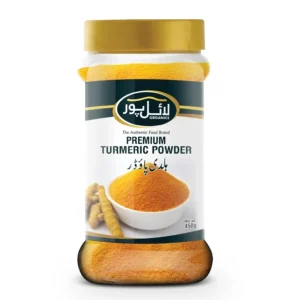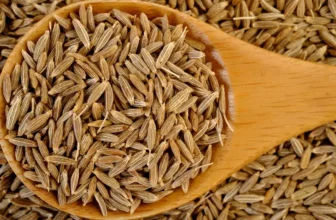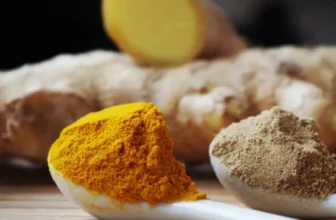How to Incorporate Turmeric into Your Diet
Incorporate Turmeric to Your Diet, often referred to as the golden spice or Indian saffron, is a vibrant yellow-orange root that has been used for centuries in Asian cuisine and traditional herbal remedies.
Its active compound, curcumin, is renowned for its anti-inflammatory and antioxidant properties, making it a valuable addition to any meal plan. This comprehensive guide will explore various ways to incorporate turmeric to your diet, ensuring you enjoy numerous turmeric health benefits.
Table of Contents
Health Benefits of Turmeric into your diet
Before diving into the culinary uses, it’s essential to understand the wellness advantages of adding turmeric to your diet. Curcumin is celebrated for its anti-inflammatory capabilities, which can help reduce inflammation and relieve conditions such as arthritis. Moreover, turmeric acts as a potent antioxidant, protecting cells from damage caused by free radicals and aiding in detoxification.
Regular consumption of turmeric into your diet can also bolster the immune system, helping the body fend off illnesses. Studies have shown that turmeric may support weight loss by increasing metabolism and reducing fat accumulation. With such a range of health gains, finding ways to include turmeric in your daily food intake is a smart move.

Cooking with Turmeric
One of the simplest ways to add turmeric to your diet is through cooking. This versatile spice can be used in various dishes, from savoury to sweet. Here are some ideas to get you started:
- Curries and Stews: Turmeric is a staple in many curry recipes, providing a warm, earthy flavour and a beautiful golden hue. Add it to your favourite curry or stew for an extra health boost.
- Soups: A pinch of turmeric can enhance the flavour and colour of soups. It pairs well with vegetables, lentils, and chicken.
- Rice and Grains: Mix turmeric into rice or quinoa to give it a vibrant colour and a subtle flavour. Incorporating the spice into your diet is easy without changing the dish’s overall taste.
- Eggs: Sprinkle turmeric on scrambled eggs or an omelette for a nutritious start to your day.
- Vegetables: Roast or sauté vegetables with turmeric, black pepper, and olive oil for a flavorful side dish.
Turmeric Smoothies and Drinks
Incorporate Turmeric into Your Diet can easily be added to your liquid intake if you enjoy smoothies or refreshing beverages. Here are some popular options:
- Golden Milk: Also known as turmeric latte or haldi doodh, this soothing drink is made by simmering milk with turmeric, black pepper, and other spices like cinnamon and ginger. It’s a perfect evening drink to relax and enjoy the medicinal properties of turmeric.
- Turmeric Smoothie: Blend turmeric with fruits like mango, pineapple, banana, spinach, ginger, and a splash of coconut milk. This health drink is not only delicious but also packed with nutrients.
- Turmeric Tea: Steep fresh turmeric root or powdered turmeric in hot water, and add a bit of honey and lemon for a refreshing and immune-boosting tea.
Turmeric in Baking and Sweets
Incorporate Turmeric to Your Diet isn’t just for savoury dishes; it can also be used in baking and desserts. Here are a few ideas:
- Turmeric Muffins: Add a teaspoon of turmeric to your favourite muffin recipe for a unique twist and a healthful boost.
- Golden Milk Ice Cream: Make a creamy and spicy ice cream using the flavours of golden milk.
- Turmeric Energy Balls: Combine dates, nuts, coconut, and turmeric to your diet to create energy balls that are perfect for a quick snack.
Using Turmeric Supplements

Side Effects and Dosage
While turmeric is generally safe for most people, it’s essential to be aware of potential adverse reactions. Consuming high amounts of turmeric may cause gastrointestinal issues such as nausea or diarrhoea. It’s recommended to start with small quantities and gradually increase your intake level. For supplements, follow the dosage instructions provided on the packaging or consult with a healthcare provider.
Organic and Fresh Turmeric into your diet
Choose organic turmeric to avoid exposure to pesticides and other chemicals when possible. Fresh turmeric root can often be found in the produce section of health food stores or Asian markets. It has a more intense flavour than turmeric powder, which can be grated or sliced into various dishes.
Integrating Turmeric into Your Daily Routine
Consistency is critical to maximizing the culinary benefits and medicinal properties of turmeric. Here are some tips to help you make turmeric a regular part of your diet:
- Meal Prep: Add turmeric to your weekly meal prep for sauces, marinades, and dressings.
- Daily Ritual: Make a habit of drinking golden milk or turmeric tea daily.
- Experiment: Feel free to get creative in the kitchen. Try adding turmeric to different recipes and discover what you enjoy the most.
Related Post
The Global Turmeric Market: Trends and Forecast
Conclusion
Incorporating turmeric to your diet is a simple and effective way to take advantage of its health benefits. Whether through cooking, drinks, supplements, or baking, there are countless ways to enjoy this golden spice. Start small, experiment with different recipes, and make turmeric a staple in your nutrition plan to enhance your wellness and overall health.
Other Top Selling Products
-
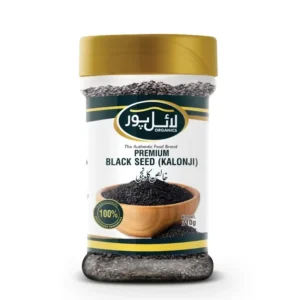 Premium Black Seed – Kalonji (Khalis Kalwanji) – 100% Natural & Pure | Nutrient-Rich & Flavorful | Best Price in Pakistan₨ 277.00 – ₨ 640.00Price range: ₨ 277.00 through ₨ 640.00
Premium Black Seed – Kalonji (Khalis Kalwanji) – 100% Natural & Pure | Nutrient-Rich & Flavorful | Best Price in Pakistan₨ 277.00 – ₨ 640.00Price range: ₨ 277.00 through ₨ 640.00 -
 Premium Crushed Red Chili (Crushed Lal Mirch, Darra Mirch) – 100% Natural & Pure | Super Spicy Flavour & Vibrant Color | Best Price in Pakistan₨ 219.00 – ₨ 780.00Price range: ₨ 219.00 through ₨ 780.00★★★★★
Premium Crushed Red Chili (Crushed Lal Mirch, Darra Mirch) – 100% Natural & Pure | Super Spicy Flavour & Vibrant Color | Best Price in Pakistan₨ 219.00 – ₨ 780.00Price range: ₨ 219.00 through ₨ 780.00★★★★★ -
 Premium Black Cumin (Kala Zeera) – 100% Natural Organic & Pure | Intense Flavour & Rich Aroma | Best Price in Pakistan₨ 373.00 – ₨ 860.00Price range: ₨ 373.00 through ₨ 860.00★★★★★
Premium Black Cumin (Kala Zeera) – 100% Natural Organic & Pure | Intense Flavour & Rich Aroma | Best Price in Pakistan₨ 373.00 – ₨ 860.00Price range: ₨ 373.00 through ₨ 860.00★★★★★ -
 Premium Kishmish (Raisin) Sundarkhani – 100% Natural Organic & Pure | Rich in Nutrients & Sweet Flavour | Best Price in Pakistan₨ 281.00 – ₨ 410.00Price range: ₨ 281.00 through ₨ 410.00
Premium Kishmish (Raisin) Sundarkhani – 100% Natural Organic & Pure | Rich in Nutrients & Sweet Flavour | Best Price in Pakistan₨ 281.00 – ₨ 410.00Price range: ₨ 281.00 through ₨ 410.00 -
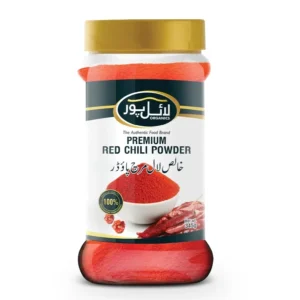 Premium Red Chili Powder (Lal Mirch Powder) – 100% Natural & Pure | Hot Spicy Flavour & Vibrant Color | Best Price in Pakistan₨ 200.00 – ₨ 1,015.00Price range: ₨ 200.00 through ₨ 1,015.00
Premium Red Chili Powder (Lal Mirch Powder) – 100% Natural & Pure | Hot Spicy Flavour & Vibrant Color | Best Price in Pakistan₨ 200.00 – ₨ 1,015.00Price range: ₨ 200.00 through ₨ 1,015.00 -
 Premium Black Pepper Powder (Kali Mirch Powder) – 100% Natural & Pure | Bold Flavour & Rich Aroma | Best Price in Pakistan₨ 664.00
Premium Black Pepper Powder (Kali Mirch Powder) – 100% Natural & Pure | Bold Flavour & Rich Aroma | Best Price in Pakistan₨ 664.00

